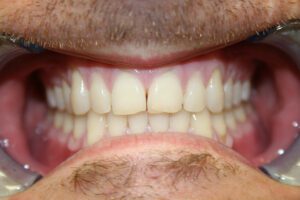 Nature has signified the importance of first permanent molar by giving it the first rank in eruption sequence of the permanent dentition. First permanent molar erupts at the age of 6 to 7 years and hence is also known as “six year molar”
Nature has signified the importance of first permanent molar by giving it the first rank in eruption sequence of the permanent dentition. First permanent molar erupts at the age of 6 to 7 years and hence is also known as “six year molar”
With the advancing age of the child the diet pattern also starts changing as intake of hard diet increases leading to a requirement of stronger biting force. The change in dentition from deciduous to permanent is due to this reason and the eruption of the first molar is from where this change starts.
Importance of first permanent molar is due the following features of 1st permanent molar;
1. occlusal morphology,
2. root surface area,
3. early timing of eruption and
4. anatomical location of 1st permanent molar
1. Occlusal Morphology
Large occlusal table of this tooth allows it bear maximum occlusal loads during mastication. This allows children to switch to hard diet with ease and comfort. It can bear forces upto 800 N which is sufficient to resist forces transmitted during biting and chewing of hard diet.
Occlusal morphology also has the most basic role in occlusion. Inter molar relationship is the 1st of the six keys of occlusion by Andrew and it depends a lot on the occlusal morphology of the 1st molars.
It has deep pits and fissures hence making the occlusal morphology for the cariogenic bacteria to survive and proliferate in. therefore it requires great care to prevent caries in it.
2. Root Surface Area
These molars are multi-rooted teeth with 3 roots in the maxillary (upper) and 2 roots in the mandibular (lower) first permanent molars. This gives them a larger surface area to grip the bone strongly. This grip is utilized for anchorage in orthodontic tooth movements. Therefore presence of healthy first permanent molars makes treatments concerned with tooth movements much easier
3. Early Timing of Eruption
It is often mistaken as a deciduous tooth which makes it more prone to the usual careless behavior of the parents towards their child’s deciduous dentition. The tooth due to this careless attitude ends up with pulpitis and is then either saved with endodontic treatment or is extracted.
4. Anatomical Location In The Arch
It erupts posterior to the 2nd decidous molar as a non-succedaneous tooth, this location allows it to play a primary role in establishment of arch perimeter
Early loss may in addition lead to increased risk of caries in adjacent teeth and it also leads to malocclusion because of distal and mesial drift of adjacent 2nd pre molar and 2nd molar respectively. It may also result in an early eruption of the 3rd molar of that side than that of the contra lateral side
GENERAL SAFETY MEASURES
All the above stated key features of first permanent molars lead us to the title phrase that we must save this tooth at any cost. It is essential to go for prevention and/or early treatment of this tooth. Following measures should be adopted
1. tooth brushing with approved tooth brushes and with recommended tooth brushing techniques
2. using recommended dentrifices twice daily
3. using dental floss and tongue scrapper
4. visiting dentists regularly for routine dental check up
Saving the first permanent molar may seem not that important but negligence may lead to serious problems so… save the first permanent molar!!!

